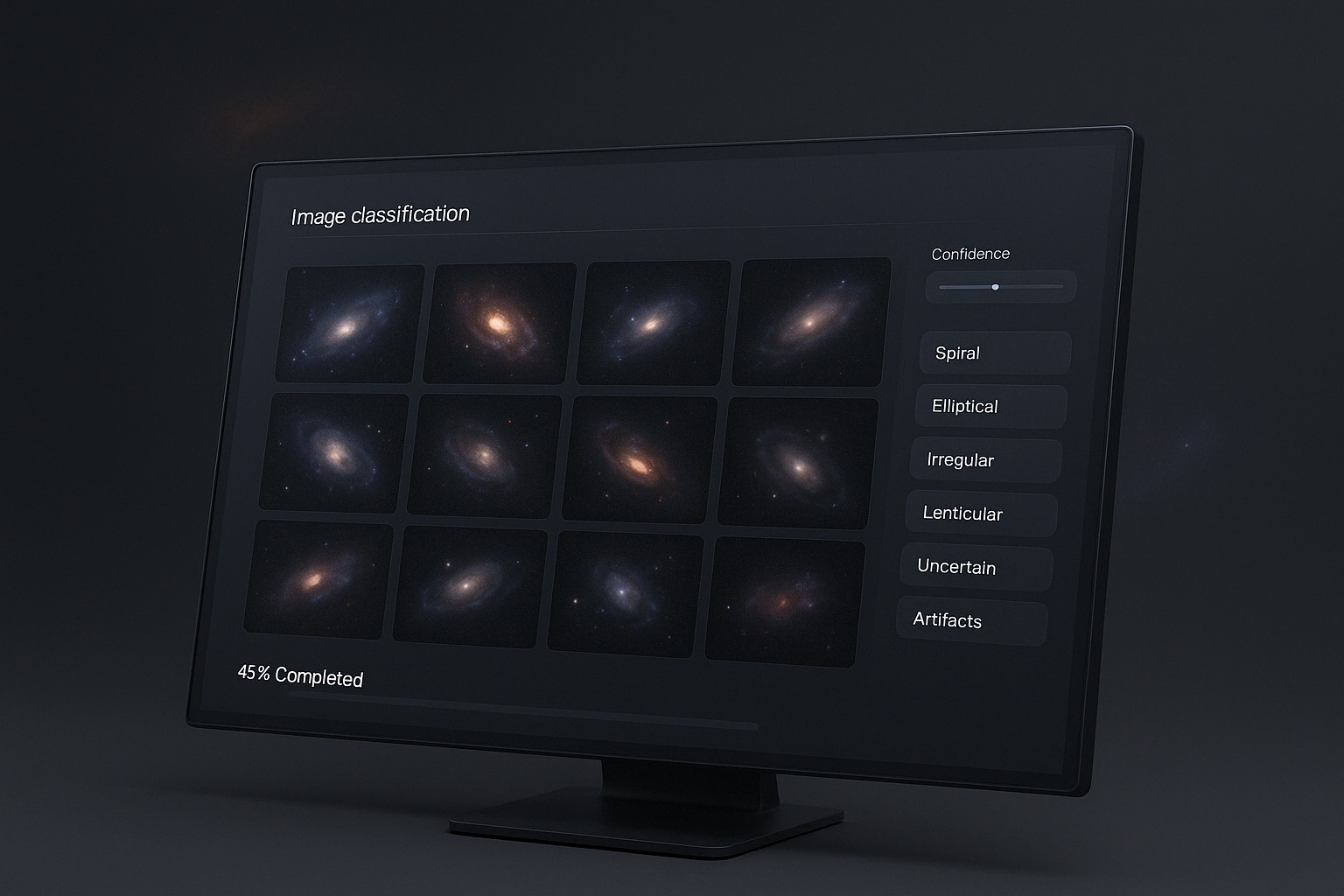Astronomical Image Classification Platform
Overview
This project was developed as part of my final-year dissertation for the BSc (Hons) Computing degree. The aim was to create a full-stack web application to support the collaborative classification and annotation of astronomical images. Designed with large-scale research initiatives in mind, such as Euclid and the Large Synoptic Survey Telescope (LSST), the platform provides a structured environment for organising, tagging, and managing image datasets across different user roles. The system was developed to address gaps identified in existing platforms, particularly around project management, role-specific access, and structured data export for machine learning. It enables lead scientists to create and manage projects, upload images, assign users, and define tagging criteria. Astronomers can classify images with confidence ratings, and overall project progress is visualised in real time through a dynamic dashboard interface.

Skills Learned
Throughout this project, I developed full-stack development skills with a strong focus on usability, accessibility, and database design. I gained experience working with role-based access control, data modelling, image management workflows, and modular system architecture. I also deepened my understanding of user interface design by incorporating accessibility best practices, wireframing, and cognitive walkthrough evaluations into the design process.
Tools and Tech Stack
The platform was developed using a full-stack approach, combining front-end technologies such as HTML, CSS, and JavaScript with a PHP and MySQL backend. The development environment was managed locally using XAMPP, allowing for integrated testing and database control via phpMyAdmin. A modular architecture was implemented using structured UML diagrams, entity-relationship models, and class diagrams to support scalability and maintainability. Role-based access control was handled through PHP session logic, ensuring distinct user experiences for lead scientists and annotators. The system was tested iteratively using a test-driven development approach, with accessibility best practices informed by WCAG 2.1 guidelines. Front-end usability and user flows were evaluated through cognitive walkthroughs and wireframing, helping refine the interface for real-world scientific collaboration and dataset preparation.
Project Log
Phase 1: System Design and Research
September to December 2024
The first phase involved defining the problem domain and conducting an in-depth literature review. Existing tools such as Galaxy Zoo, Labelbox, and MedSeg were analysed to identify gaps in project management, collaboration, and image classification workflows. Key scientific projects like LSST and Euclid highlighted the need for human-verified datasets to support machine learning models. These insights informed the core features of the proposed system: role-based access, user-guided tagging, confidence scoring, and a scalable backend architecture. Early wireframes, diagrams, and requirement tables helped shape a robust and modular development plan.
Phase 2: Development of Core Features
January to February 2025
Development began with setting up the backend using XAMPP and designing the system architecture based on third normal form (3NF) principles. The front end was built using HTML and CSS with dynamic functionality implemented through JavaScript. Lead scientists could now create projects, upload astronomical images, assign users, and define classification instructions. Astronomers were granted limited access to only the features they needed, such as image tagging and confidence scoring. A progress dashboard dynamically updated as images were classified, providing real-time tracking for all users. The system was tested incrementally through a test-driven development approach, ensuring functionality matched requirements as features were added.
Phase 3: Usability Testing and Refinement
March to April 2025
The system underwent a cognitive walkthrough using a detailed persona-based scenario. This evaluation confirmed that core tasks—project creation, classification, and data export—could be completed efficiently. Feedback was also collected around UI improvements, particularly the need for clearer form validation and better user feedback during editing. Although the image annotation feature and full scalability testing were not completed due to time constraints, the platform was successfully delivered as a prototype. It included all the foundational elements needed to support collaborative workflows and could be extended for live deployment and future machine learning integration.
Future Updates Planned
This project was developed as part of my final-year dissertation for my BSc (Hons) Computing degree. While the system includes several areas that could be expanded in future — such as image annotation tools, scalability testing, and machine learning integration — there are no immediate plans for continued development beyond its academic submission. The platform successfully met its intended objectives as a prototype and demonstrates the core features required for collaborative classification of astronomical datasets.



